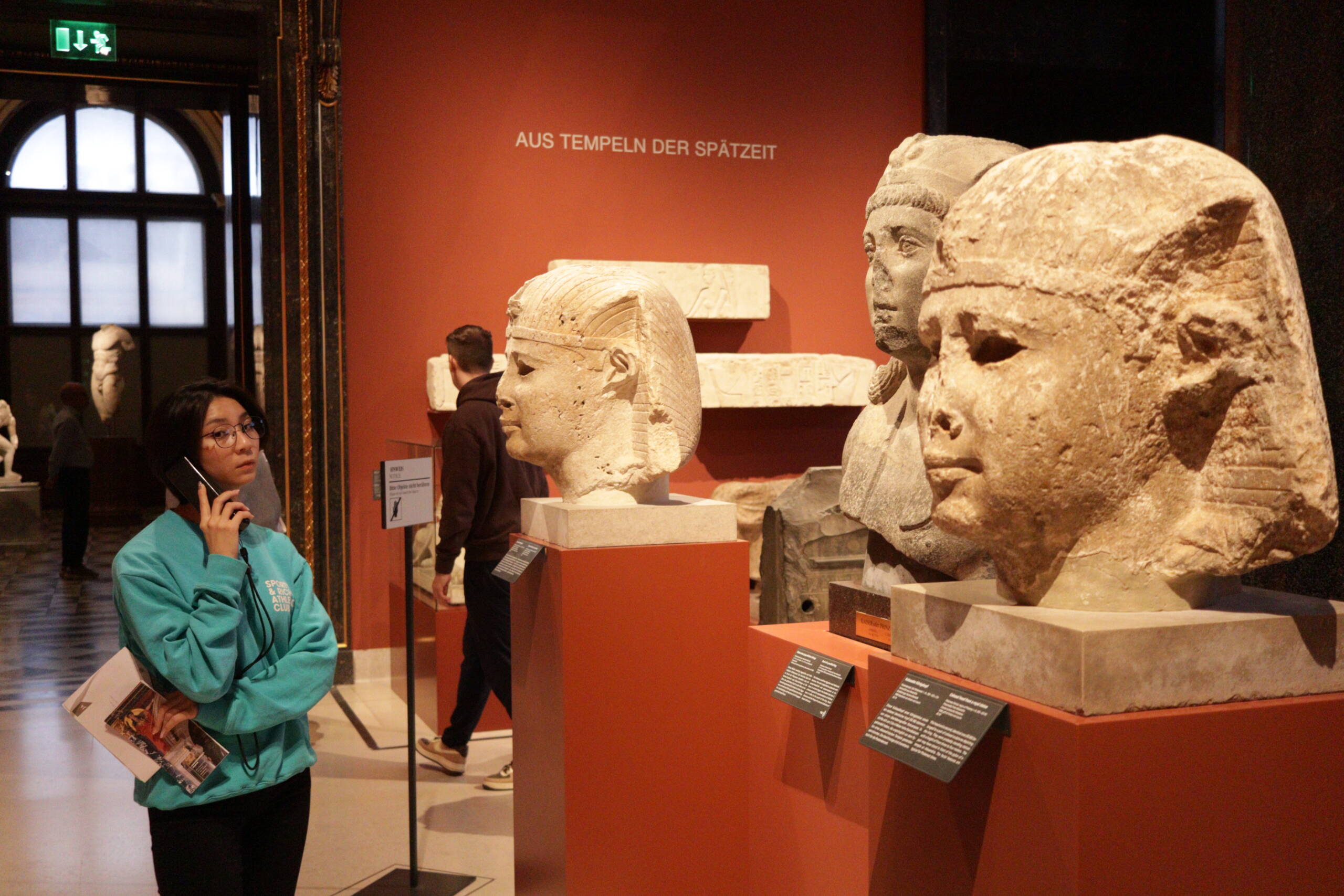Walking into the Egyptian rooms in the Kunsthistorisches Museum is like stumbling into a time warp, except the time warp has been repainted in a lovely terracotta red and neatly labeled in German. The first thing that hit me wasn’t some mystical “energy of the ancients,” but how heavy those stone heads looked. You could almost imagine a poor Habsburg servant, two centuries ago, sweating while hauling one of them up the Ringstraße, probably wondering why anyone would want a chunk of granite with half a nose in their palace. But here they are, lined up on pedestals, calm as can be, watching tourists shuffle past in sneakers and winter jackets.

I stood in front of one of the pharaoh heads and thought, “Well, you’re eroded, your face is half gone, but you still look more composed than I’ll ever manage on a Monday morning.” There’s something weirdly comforting about that. The Egyptians perfected the poker face long before modern diplomacy. These sculptures weren’t portraits in the modern sense, but rather eternal masks. And the irony is that they succeeded—people still bow their heads slightly when standing in front of them, even if they don’t realize it.
Then you turn a corner and everything shrinks in scale. Suddenly you’re leaning over glass cases filled with amulets, scarabs, and shabtis—the little figurines meant to work for you in the afterlife. I had to laugh. Imagine spending your whole life working, only to plan for an eternal workforce of mini-you’s to take over once you die. Egyptians really didn’t trust rest, did they? Still, there’s something touching about it. Even eternity was organized, catalogued, and bureaucratically staffed. Some things never change.
The coffins are another level. Painted faces, gold leaf, protective gods staring out from the wood. They’re beautiful and eerie at the same time. I found myself lowering my voice automatically, as though these coffins were still occupied by someone who might be listening. And of course, they once were. Somebody, two or three thousand years ago, was placed inside with care, wrapped in linen, prayers whispered over them. It’s humbling, and maybe a little uncomfortable, because here we are gawking at them centuries later.
There are also moments of surprise—the Amarna-style figures with elongated heads and almost quirky, cartoon-like proportions. They feel like ancient artists suddenly broke character and decided to try something completely different. For a second you think: maybe Egyptian art wasn’t as rigid and timeless as we like to imagine. Maybe even they had phases, trends, mistakes. It makes the whole thing feel more human.
And then of course there’s the elephant in the room: how all this ended up in Vienna. The Habsburgs collected during the great European Egypt craze, when every emperor, duke, and random aristocrat wanted their own mummy or scarab. Some items were bought, others probably not in ways we’d applaud today. You can feel the history of collecting hovering in the background—these objects once belonged to temples, tombs, villages, and now they sit behind glass, admired by people like me who wandered in with an audio guide and too much coffee. It’s hard not to feel the irony.
But what lingers most isn’t the politics or the history—it’s the mood. The calm heaviness of stone faces. The delicate glow of turquoise faience beads. The whisper of papyri too fragile to touch. You walk out into the bright Vienna streets carrying a strange silence with you, the kind that only ancient things can give. And maybe that’s why people keep coming back: not to learn every detail, but to feel that fleeting reminder that we’re not as different from them as we think. They worried, they hoped, they wanted eternity. And so do we—though we might settle for a good selfie in the museum café afterward.
Leave a Reply